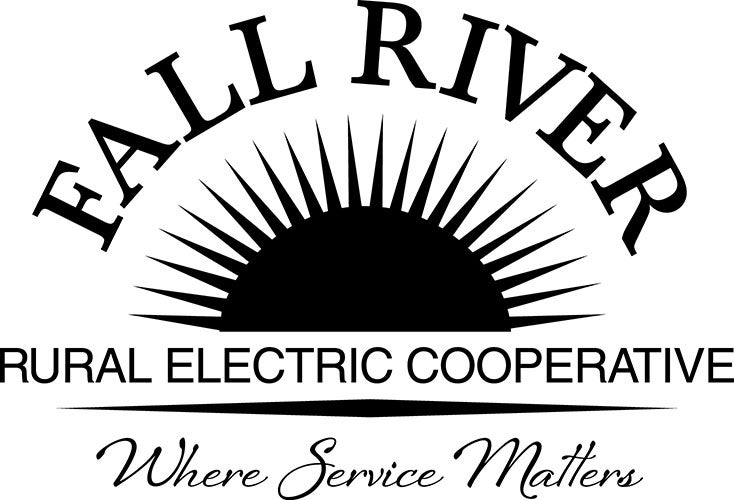Hydroelectric power is electricity produced from generators driven by turbines that are turned by falling or fast-flowing water.
There are many advantages including that hydropower is renewable energy, does not pollute, is very reliable and safe. Hydropower can be generated 24/7 365 days a year. It is considered the "battery backup" for wind and solar generation as the wind doesn't blow all the time and neither does the sun shine every day, all day.
Some people think that the dams built to allow for hydropower production have negative effects on fish however, millions of dollars are spent annually to study and improve fish survival rates. Additionally, dam owners including Fall River, have constructed fish ladders, aeriation basins to maintain dissolved oxygen levels necessary for fish reproduction, placed fish screens to keep fish out of irrigation channels and back in the streams and rivers.
Other than the purported effect on fish, there are NO other impacts that hydropower has on the environment.
Hydropower generation constitutes 85% of the power provided to our members. It when combined with the wind and nuclear power generation purchased by FRE result in FRE being 93% carbon-free!
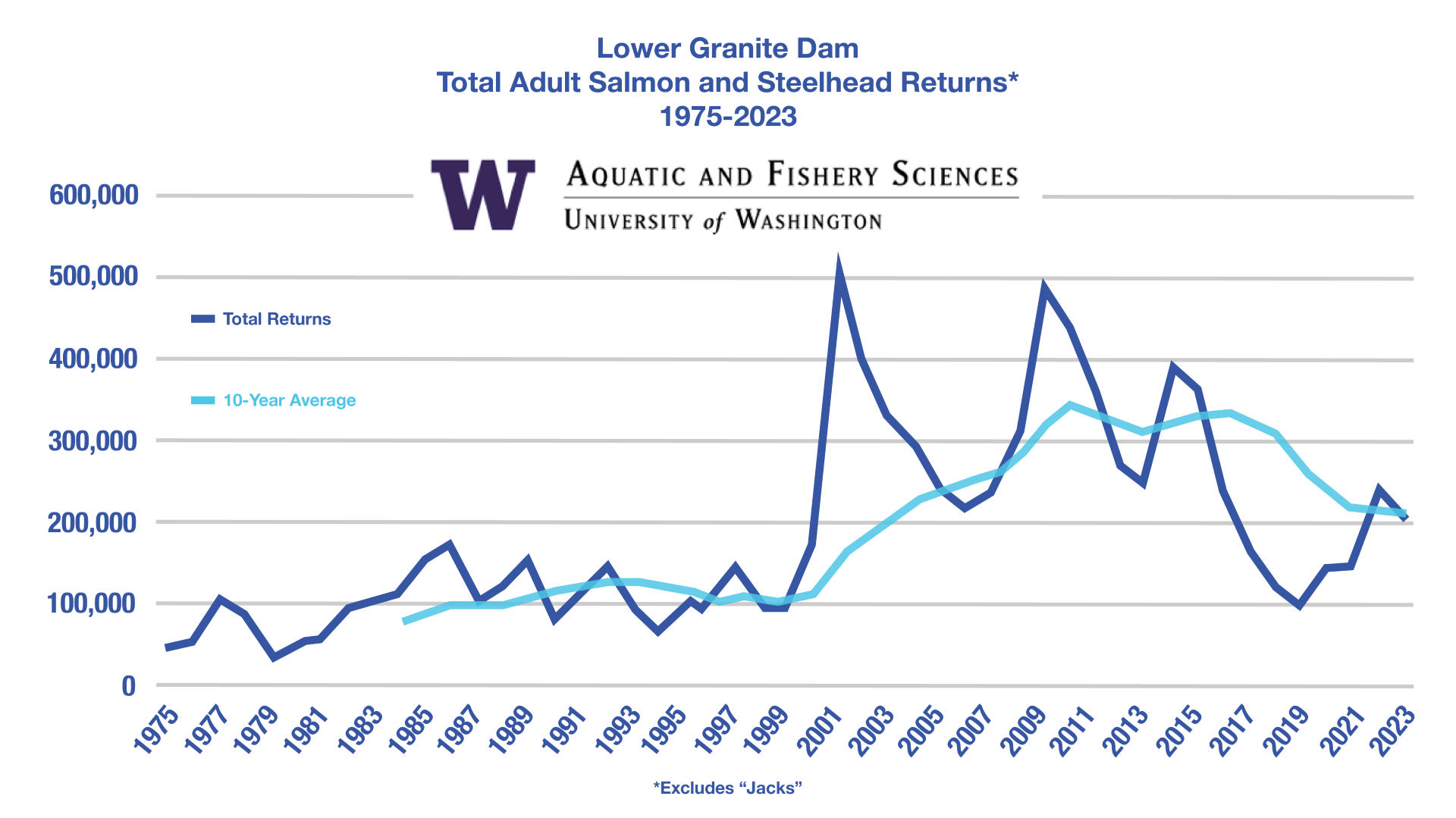
According to the University of Washington’s Columbia River Data Access in Real Time (DART) website, tens of thousands–often hundreds of thousands–more salmon and steelhead return to our rivers than when the first federal dam was constructed in the 1930s. In 2024, a record 755,000+ adult sockeye passed Bonneville Dam–a record in the 86 years that dam has provided affordable, reliable, carbon-free hydropower and river transportation for the people of our region.
More than 1.7 million salmon and steelhead have returned to the Columbia River system - 370% more than when the first federal dam went into operation in 1938. The graph shows fish returns at the Lower Granite Dam, which is the last dam the salmon traverse on their way to Idaho's spawning grounds
We recognize that dams do have an impact and that there is always more work to do, but the billions invested through public power rates to mitigate for those impacts are making a real difference. Next time you hear that salmon and steelhead are on the decline because of dams, you will have the facts.
Nature’s Energy
Energy generated by water is clean and reliable.
Two of the Cooperative’s hydroelectric facilities (Island Park & Buffalo) were the first certified low-impact hydropower projects in Idaho and our newest hydro facility, Chester, recently received its certification.
 We know fishing on our area’s rivers and stream is important to our members and our economy. That is why Fall River invested in projects at our hydroelectric facilities to enhance our fisheries, while making the clean power you rely on.
We know fishing on our area’s rivers and stream is important to our members and our economy. That is why Fall River invested in projects at our hydroelectric facilities to enhance our fisheries, while making the clean power you rely on.
Fall River Electric Cooperative in conjunction with 14 other Northwest electric cooperatives, as PNGC Power, also owns the Coffin Butte Landfill Gas Generation Project, located near Corvallis, Oregon. Coffin Butte generates clean, renewable green energy that comes from landfill gas – a natural by-product of the organic matter in the neighboring regional landfill. Fall River Electric receives renewable energy credits for 3 percent of the total power predictably produced at Coffin Butte, roughly 1.2 megawatts annually.
The Coffin Butte gas project is another example of Fall River Electric Cooperative’s commitment to innovative resources, responsible resource use, reliable service, and low cost energy for all our owner-members.
Chester Hydropower Project
The Chester hydro facility is a joint venture between Fall River Rural Electric Cooperative and the Fremont-Madison Irrigation District and was licensed by the Federal Energy Regulatory Commission in 2008 with construction completed in 2014. The unique design features a 38 inch inflatable rubber dam bolted to the top of the original concrete irrigation diversion dam built in the 1930s. The rubber dam when inflated slightly increases the upstream level of the river that improves the flow of water through the dam’s three turbines which can produce up to 10 million kilowatt hours annually of clean, renewable hydropower.
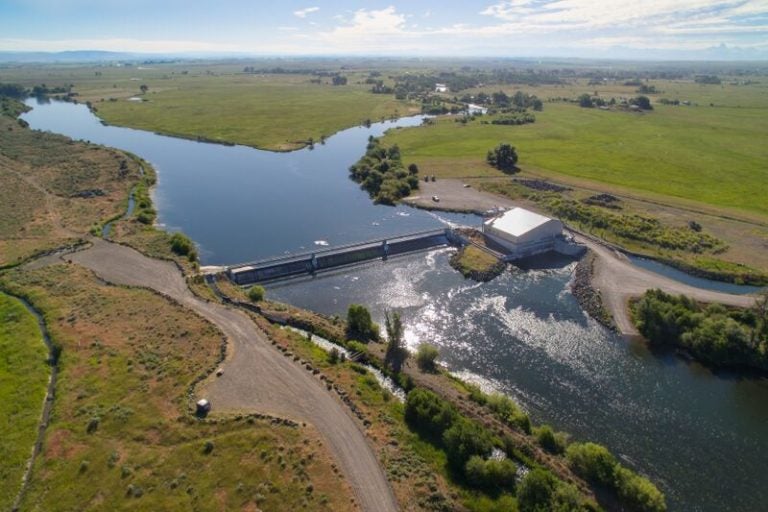
A collaborative effort between Fall River Electric, the Fremont-Madison Irrigation District, the Henry’s Fork Foundation, Trout Unlimited and the Greater Yellowstone Coalition resulted in funds being provided to add a fish ladder to the hydro construction project which allows trout to move upstream in the Henry’s Fork as far as the Ashton Dam as well as access into the Fall River drainage. See the fish ladder to the left of the power plant in the photo below.
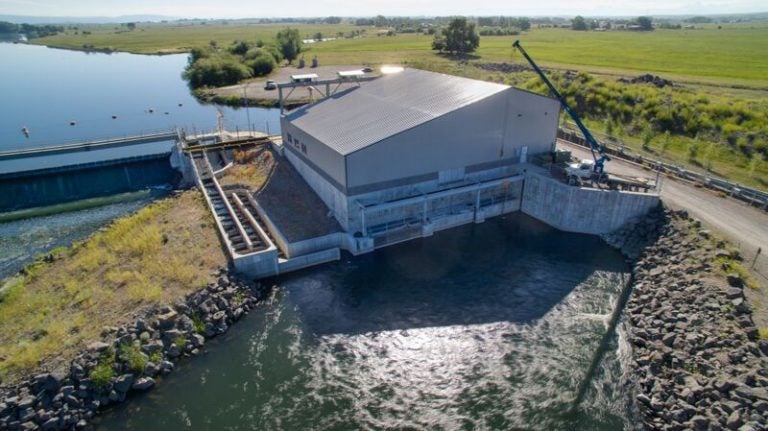
Island Park Hydropower Project
In 2001, the Island Park Hydropower Project became the first project in Idaho certified low-impact by the Low-Impact Hydropower Institute (LIHI). LIHI renewed its certification in 2006. The Island Park Hydropower plant is on a dam constructed in 1939 for irrigation. The hydropower facility does not effect dam operations or flows released from Island Park Reservoir.
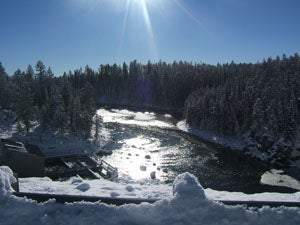
The Cooperative installed an aeration basin below the dam to oxygenate water as it comes over the dam’s large drop. The aeration basin promotes fish survival below the dam and a fish screen on the turbine intake keeps fish from becoming entrained in the hydropower facility. Island Park Hydro produces roughly 20,000 megawatts of clean power each year, 86 percent of the power available through the Green Power Program.
In 2017, Fall River Electric added a webcam at this hydro and now provides a website link http://www.fallriverelectric.com/river-web-cam/ that provides fishermen with helpful information about river conditions on the Henry’s Fork including flow rates, water temperature, dissolved oxygen levels & turbidity. This river information is updated daily Monday through Friday each week excluding holidays and has been linked to many river guide websites.
Buffalo River Hydropower Project
In 2006, the Buffalo River Hydropower Project became the second project certified in Idaho by the Low-Impact Hydropower Institute. The Cooperative installed a 270 foot-long fish ladder to allow fish to move upstream over the 12 foot-high dam and into the Buffalo River’s habitat. Fish screens on the turbine intake promote survival of fish passing downstream.
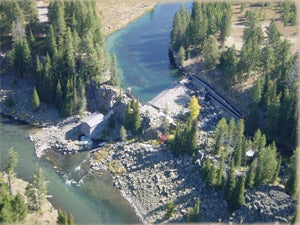
The Henry’s Fork Foundation, a private non-profit organization, monitors fish moving upstream and downstream through the facility. Monitoring data shows the fish passage infrastructure installed by the Cooperative is successful. You can find out more about long-term monitoring of the project at www.henrysfork.org.
The Buffalo River Hydro produces roughly 2,000 megawatts of clean power each year, roughly 9 percent of the power offered through the Green Power Program.
